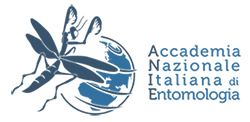
Stefano Colazza
stefano.colazza@unipa.it
BIOGRAPHY
Stefano Colazza is full professor of Agricultural Entomology at the University of Palermo, Department of Agricultural, Food and Forest Sciences (SAAF). He graduated at University of Perugia working with the internationally known biocontrol researcher Professor Ferdinando Bin, and remained at Perugia as a lecturer and teaching assistant since 1986. In 1987, he moved to Professor Brad Vinson’s group at Texas A&M University supported by a CNR grant before taking a faculty position at the University of Palermo as an associate professor, and was promoted to full professor in 2006. He has served as department head since 2015, and member of the Academic Senate since 2019. He spent a one-year sabbatical with prof. Jocelyn Millar at University of California, Riverside in 2003.
Dr. Colazza’s current research focuses on infochemicals and the behavioural ecology of plant-insect herbivores-insect parasitoid interactions, and on the chemical ecology of plant VOCs in a multitrophic context. He has published about 200 scientific articles, and edited a book on insect chemical ecology.
He was elected as a fellow of the Italian Academy of Entomology, and the Academy of Georgofili. He currently serves as an associate editor for BioControl, and as specialty chief editor of Frontiers in Ecology and Evolution in the section of Chemical Ecology.
Soroker, V., & Colazza, S. (Eds.). (2017). Handbook of major palm pests: biology and management. John Wiley & Sons.
Wajnberg, E., & Colazza, S. (Eds.). (2013). Chemical ecology of insect parasitoids. John Wiley & Sons.
Colazza, S., Aquila, G., De Pasquale, C., Peri, E., & Millar, J. G. (2007). The egg parasitoid Trissolcus basalis uses n-nonadecane, a cuticular hydrocarbon from its stink bug host Nezara viridula, to discriminate between female and male hosts. Journal of chemical ecology, 33(7), 1405-1420.
Colazza, S., McElfresh, J. S., & Millar, J. G. (2004). Identification of volatile synomones, induced by Nezara viridula feeding and oviposition on bean spp., that attract the egg parasitoid Trissolcus basalis. Journal of chemical ecology, 30(5), 945-964.
Colazza, S., Fucarino, A., Peri, E., Salerno, G., Conti, E., & Bin, F. (2004). Insect oviposition induces volatile emission in herbaceous plants that attracts egg parasitoids. Journal of Experimental Biology, 207(1), 47-53.
